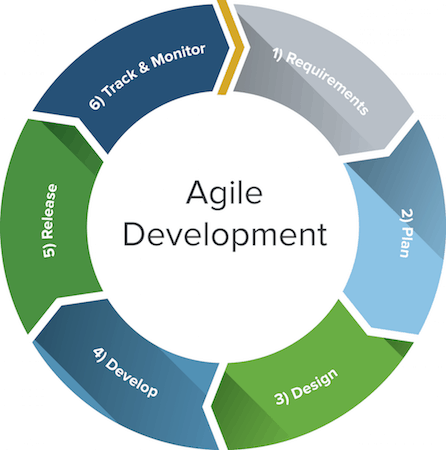Cloud Computing Platforms - Fundamentally accelerates the access to compute resources to facilitate faster software development and improved application scalability.
Amazon Web Services
Pivotal Cloud Foundry
Google Cloud Platform
Microsoft Azure
Rackspace
OpenStack
Virtualization Platforms - Uses software to abstract hardware and make it possible to run multiple applications at the same for more efficient use of compute resources.
VMware
KVM
Xen
VirtualBox
Vagrant
QEMU
Containerization - Wraps software in a complete filesystem that contains everything it needs to run to enable automated deployments and more reliable software.
Docker
rkt
LXC
Linux OS Installation - Performs unattended operating system installation and configuration.
Kickstart
Cobbler
Fai
Configuration Management and Infrastructure as Code - Allows teams to declare and automate system configuration for better application manageability and IT productivity.
Puppet
Chef
Ansible
HashiCorp Terraform
AWS CloudFormation
Test and Build Systems - Facilitates continuous integration and continuous delivery by automating repeatable jobs as part of the software development process.
Solano Labs
Jenkins
Gradle
Application Deployment - Automates the process of making a new version of an application available on one or more web servers.
Capistrano
Monitoring, Alerting, and Trending - Allows digital teams to measure the impact of frequent release cycles across complex, dynamic IT environments.
New Relic
PagerDuty
VictorOps
Sensu
xMatters
BlueMedora
Logging - Provides an intuitive interface for analyzing machine-generated data for easier application-issue detection and resolution.
PaperTrail
Logstash
Loggly
Logentries
Splunk
SumoLogic
Process Supervisors - Eases the management of operating system services.
Monit
runit
Supervisor
God
Blue Pill
Upstart
systemd
Security - Helps you keep your applications safe from threats even as you release faster and adopt new technologies.
Snorby Threat Stack
Snort
Veracode
Sqreen
Sonatype
Evident.io
Collaboration and Ticketing - Allows diverse DevOps teams to break down organizational silos through better, more transparent communication.
Slack
HipChat
JIRA
ServiceNow
Orchestration - Software systems that facilitate the automated management, scaling, discovery, and/or deployment of container-based applications or workloads.
Kubernetes
Apache Mesos, DC/OS
HashiCorp Atlas
Docker Swarm
AWS Elastic Container Service
Eg: typical tools used
Configuration management:
Ansible
Chef
Puppet
Deployment:
Ansible
Jenkins
Monitoring:
Dynatrace
Version control:
Git
Test and build:Ant
Jenkins
Amazon Web Services
Pivotal Cloud Foundry
Google Cloud Platform
Microsoft Azure
Rackspace
OpenStack
Virtualization Platforms - Uses software to abstract hardware and make it possible to run multiple applications at the same for more efficient use of compute resources.
VMware
KVM
Xen
VirtualBox
Vagrant
QEMU
Containerization - Wraps software in a complete filesystem that contains everything it needs to run to enable automated deployments and more reliable software.
Docker
rkt
LXC
Linux OS Installation - Performs unattended operating system installation and configuration.
Kickstart
Cobbler
Fai
Configuration Management and Infrastructure as Code - Allows teams to declare and automate system configuration for better application manageability and IT productivity.
Puppet
Chef
Ansible
HashiCorp Terraform
AWS CloudFormation
Test and Build Systems - Facilitates continuous integration and continuous delivery by automating repeatable jobs as part of the software development process.
Solano Labs
Jenkins
Gradle
Application Deployment - Automates the process of making a new version of an application available on one or more web servers.
Capistrano
Monitoring, Alerting, and Trending - Allows digital teams to measure the impact of frequent release cycles across complex, dynamic IT environments.
New Relic
PagerDuty
VictorOps
Sensu
xMatters
BlueMedora
Logging - Provides an intuitive interface for analyzing machine-generated data for easier application-issue detection and resolution.
PaperTrail
Logstash
Loggly
Logentries
Splunk
SumoLogic
Process Supervisors - Eases the management of operating system services.
Monit
runit
Supervisor
God
Blue Pill
Upstart
systemd
Security - Helps you keep your applications safe from threats even as you release faster and adopt new technologies.
Snorby Threat Stack
Snort
Veracode
Sqreen
Sonatype
Evident.io
Collaboration and Ticketing - Allows diverse DevOps teams to break down organizational silos through better, more transparent communication.
Slack
HipChat
JIRA
ServiceNow
Orchestration - Software systems that facilitate the automated management, scaling, discovery, and/or deployment of container-based applications or workloads.
Kubernetes
Apache Mesos, DC/OS
HashiCorp Atlas
Docker Swarm
AWS Elastic Container Service
Eg: typical tools used
Configuration management:
Ansible
Chef
Puppet
Deployment:
Ansible
Jenkins
Monitoring:
Dynatrace
Version control:
Git
Test and build:Ant
Jenkins









